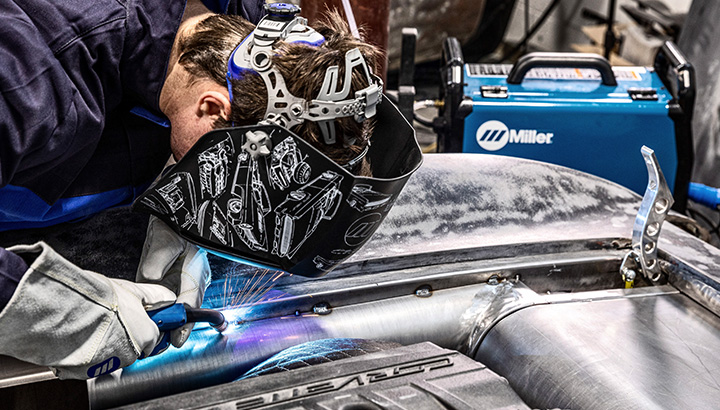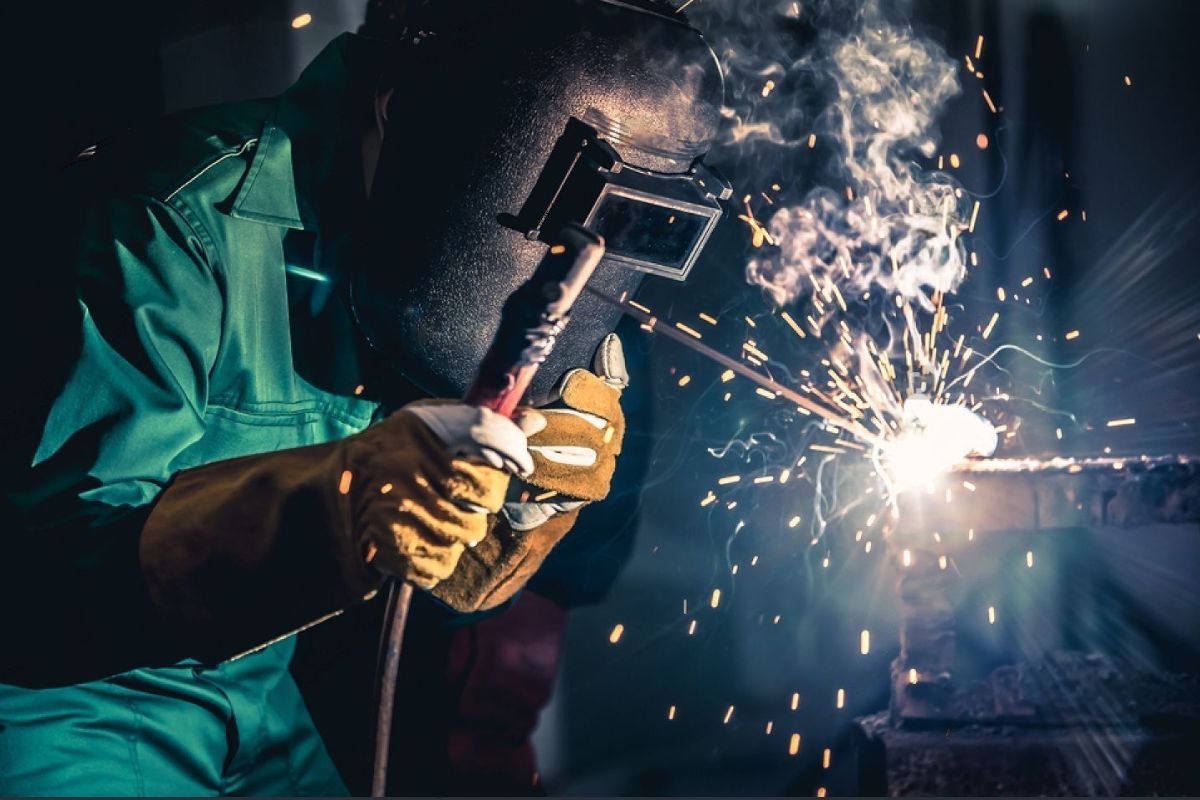Common Welding Repair Issues and How to Address Them Properly
Welding repair services commonly run into a series of problems that can threaten the integrity of the final product. Common issues consist of inadequate infiltration, porosity, and imbalance, to name a few. Each issue provides distinct difficulties that require specific methods for resolution. Understanding these problems is crucial for welders aiming to boost their end results and skills. This discussion will certainly discover these common welding repair problems and efficient approaches to address them.
Poor Infiltration
Inadequate penetration occurs when the weld steel fails to totally fuse with the base product, causing weak joints and prospective structural failings. This problem often stems from not enough warm input, incorrect electrode angle, or improper welding rate. Welders may come across insufficient infiltration as a result of a miscalculation of the necessary specifications for a particular product thickness or type. In addition, contamination on the base product's surface area can hinder reliable bonding, exacerbating the issue. To deal with poor penetration, welders ought to ensure appropriate settings on their equipment and maintain a clean job surface. Regular assessment of welds is suggested to identify any kind of deficiencies early, permitting for timely modifications and the prevention of jeopardized structural honesty in bonded settings up.
Porosity
Porosity is an usual problem in bonded joints that shows up as little gas bubbles caught within the weld metal. This flaw can jeopardize the stability of the weld, bring about reduced toughness and potential failure under stress and anxiety. Montana Mobile Welding and Repair Belgrade Fabrication. Porosity commonly emerges from contamination, wetness, or inappropriate welding strategies, which allow gases to run away into the liquified weld pool. To attend to porosity, welders should assure proper surface prep work, keep a clean working atmosphere, and utilize suitable welding parameters. In addition, picking the appropriate filler material and shielding gas can minimize gas entrapment. Regular evaluation and screening of welds can aid recognize porosity early, assuring prompt corrective activities are taken, thus protecting the quality and reliability of the bonded framework
Misalignment
Misalignment in welding can arise from different elements, including incorrect setup and thermal development. Recognizing the source is important for reliable resolution. Numerous correction strategies are readily available to realign components and ensure structural honesty.
Sources of Misalignment
Welding imbalance often comes from a variety of underlying concerns that can compromise structural stability. One primary reason is incorrect fit-up of components prior to welding, which can lead to spaces and irregular surface areas. Variants in thermal expansion throughout the welding process can also lead to distortion, particularly if the materials being joined have various coefficients of development. In addition, poor clamping and fixturing might stop working to hold components securely in area, resulting in activity during welding. Badly conserved devices, consisting of welding equipments and tools, might present disparities in the weld bead, further adding to misalignment. Ultimately, driver mistake, stemming from inadequate training or experience, can also play a substantial duty in producing misaligned welds.
Modification Techniques Readily Available
Attending to imbalance effectively calls for a mix of corrective techniques tailored to the specific concerns at hand. One typical technique is the usage of jigs or fixtures to hold parts in the appropriate placement throughout welding, guaranteeing regular alignment. Furthermore, preheating the products can help in reducing distortion and boost fit-up. For considerable imbalance, mechanical adjustment techniques, such as making use of hydraulic jacks or clamps, can be employed to fix the placement before welding. Post-weld heat therapy might likewise be required to eliminate anxieties triggered by imbalance. Finally, mindful assessment and change throughout the configuration phase can stop misalignment concerns from ending up being substantial problems, promoting a smoother welding process and boosting overall structural stability.
Distortion
Distortion is an usual obstacle in welding that can emerge from various variables, consisting of uneven cooling and heating. Comprehending the reasons for distortion is vital for applying effective prevention techniques. Resolving this problem not just boosts structural stability but additionally improves the general high quality of the weld.
Sources of Distortion
When based on the intense heat of welding, products usually go through modifications that can cause distortion. This phenomenon mainly emerges from thermal growth and tightening during the welding process. As the weld area warms up, the product increases; upon air conditioning, it acquires, which can produce inner anxieties. Furthermore, unequal heating across a work surface can aggravate these stresses, resulting in warping or flexing. The kind of material additionally plays a considerable duty; steels with differing thermal conductivity and coefficients of growth might respond in a different way, causing unpredictable distortions. Furthermore, inadequate joint style and poor fixturing can add to misalignment during welding, raising the possibility of distortion. Understanding these causes is necessary for efficient welding repair service and prevention strategies.
Avoidance Techniques
Efficient prevention methods for distortion throughout welding concentrate on controlling warmth input and ensuring correct joint layout. Maintaining a consistent warm input aids to lessen thermal expansion and contraction, which can result in distortion. Utilizing techniques such as pre-heating the work surface can also minimize the temperature level slope, advertising consistent heating. In addition, selecting ideal joint layouts, such as T-joints or lap joints, can enhance security and lower tension concentrations. Implementing proper fixturing to secure the workpieces in area better help in preserving placement during the welding procedure. Finally, staggered welding series can disperse warmth more uniformly, preventing localized distortion. By using these approaches, welders can substantially reduce the probability of distortion and improve the overall quality of their welds.
Breaking
Cracking is a typical concern experienced in welding repairs, frequently resulting from numerous aspects such as incorrect cooling rates, product choice, or poor joint prep work. The occurrence of fractures can considerably endanger the honesty of the weld, leading to potential failures throughout procedure. To resolve this problem, welders need to first examine the source, ensuring that products work and appropriately chosen for the specific application. Additionally, controlling the cooling price throughout the welding procedure is vital; rapid air conditioning can induce stress and cause cracking. Correct joint design and prep work additionally contribute to decreasing the risk. Implementing these approaches can enhance weld quality and toughness, inevitably minimizing the likelihood of splitting in completed weldments.

Insufficient Fusion
A considerable issue in welding repairs is incomplete combination, which takes place when the weld steel does not appropriately bond with the base material or previous weld passes - Montana Mobile Welding and Repair Belgrade Welding. This defect can cause weak points in the joint, potentially compromising the honesty of the bonded structure. Variables contributing to insufficient blend include not enough warm input, inappropriate welding technique, and contamination of the surfaces being signed up with. To resolve this concern properly, welders should guarantee appropriate pre-weld cleansing and surface area prep work, as well as readjust their welding criteria to achieve appropriate infiltration and fusion. Normal assessment during the welding process can additionally help determine insufficient combination early, enabling for prompt restorative procedures to improve the general quality of the weld
Overheating
While welding fixings can boost structural integrity, overheating provides a considerable obstacle that can lead to product destruction. Excessive warmth during welding can alter the mechanical residential or commercial properties of steels, leading to minimized strength, raised brittleness, and warping. This sensation is particularly essential in high-stress applications where architectural dependability is paramount. Identifying overheating can include aesthetic assessments for staining or distortion, along with checking temperature during the welding procedure. To alleviate the dangers connected with getting too hot, welders must utilize appropriate techniques, such as regulating warm input, readjusting travel speed, and using ideal filler materials. Furthermore, carrying out pre- and post-weld warmth therapies can assist restore material residential properties and improve the overall quality of the repair, making sure lasting performance and safety.
Frequently Asked Inquiries
What Are the Common Indications of a Welding Problem?

Just How Can I Examine My Welds for Quality?
To evaluate welds for top quality, one can make use of aesthetic examinations, ultrasonic testing, and radiographic approaches. Each method assures structural integrity, identifies defects, and validates adherence to defined criteria, inevitably enhancing the reliability of the welded joints.
What Safety and security Precautions Should I Take While Welding?
When welding, one ought to focus on security by wearing suitable individual safety equipment, guaranteeing proper air flow, securing flammable products away, keeping a clean work area, and knowing surroundings to avoid injuries and mishaps.
Can I Fix a Weld Without Redoing the Entire Joint?
Repairing a weld without remodeling the entire joint is feasible, depending upon the damage (Belgrade). Strategies such as grinding, including filler material, or using a welding process can efficiently attend to certain imperfections while protecting the surrounding structure
What Equipment Are Necessary for Efficient Welding Repair Works?
Essential devices for efficient welding fixings consist of a welding maker, cord brush, grinder, protective equipment, clamps, and filler materials. Each tool plays an important duty in making certain quality and safety and security throughout the repair service process. Porosity typically emerges from contamination, dampness, or improper welding strategies, which allow gases to leave into click here the liquified weld swimming pool. Improperly maintained equipment, including welding equipments and tools, may introduce inconsistencies in the weld bead, further adding to misalignment. When subjected to the extreme warm of welding, materials usually undertake adjustments that can lead to distortion. Cracking is an usual problem come across in welding repairs, commonly resulting from numerous elements such as improper cooling rates, material option, or poor joint preparation. A substantial concern in welding repair services is insufficient fusion, which takes place when the weld metal does not sufficiently bond with the base material or previous weld passes.